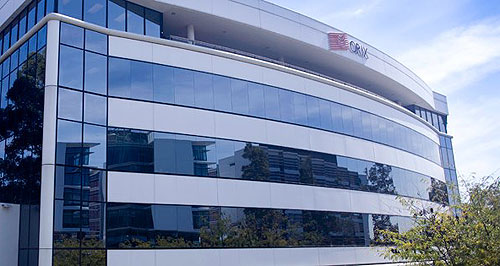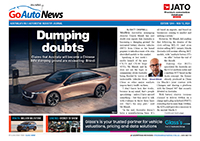Make / Model Search
News - General News - RegulationOrix fleet case raises issuesShocked: AFMA says the fleet industry has been shocked by Orix CEO John Carter’s arrest on charges of paying corrupt commissions (New Zealand Orix Team Racing Commodore pictured). Corruption case highlights need for close checks and controls over fleets: AFMA14 Apr 2015 By IAN PORTER THE corruption case involving Orix and Coca-Cola has highlighted the need for companies that are outsourcing fleet management to maintain solid internal controls, according to an industry spokesman. Australasian Fleet Managers Association (AFMA) research director Ken Thompson said corruption was rare in the fleet management business but, as with many other industries, there are large sums at stake. Mr Thompson said the fleet industry had been shocked by the revelation that Orix chief executive John Carter had been arrested on charges of paying corrupt commissions to an employee of Coca-Cola Amatil (CCA). NSW Police allege Mr Carter paid $504,000 in corrupt payments to CCA’s fleet manager in exchange for fleet management contracts. The fleet manager, who was in charge of the soft drink giant’s $30 million fleet, was also arrested, along with a second Orix executive who allegedly made the payments. Police were alerted to the case by CCA and are investigating further payments amounting to millions of dollars made over a period of years. “I don’t think it is something that would be confined to the fleet industry,” Mr Thompson said. “I think that where people have the ability to commit funds and issue purchase orders, there needs to be some management control system that has its fingers on the data they want to be looking at to make sure there is nothing amiss. “But you would expect that in any organisation.” Mr Thompson said companies wanting to outsource functions like fleet management needed to have a good idea of the tricks of the trade when it came to bidding for such contracts and operating them. “I know lots of organisations that will always go for the lowest bottom line price, even though they may have had a difficult experience with the lowest bidder,” he said. “They do not factor in a management cost that they would have in dealing with that particular organisation and the difficulties they may have in getting what they expect out of them.” “A good fleet manager will have contract management experience and I do think organisations that outsource really do need an internal fleet manager still in the organisation to ensure they are getting what they actually contracted to get. “It’s money well spent to have a fleet manager in there.” Mr Thompson also said the size of the investment alone in vehicle fleets meant it should be closely scrutinised by senior management. “When you think that the cost of the fleet is usually the third-highest outgoing for a company, you would think senior management would put more interest and attention into the fleet,” he said. “At $35,000 each, you only need 30 vehicles and you have a $1 million investment. And it isn’t an accumulating investment, it’s a depreciating investment. “It should require more management not less and, as a rule, a vehicle will lose 50 per cent of its value. That means a $1 million investment in vehicles is losing half a million dollars over three years.” The issue will be a talking point at the 2015 AFMA annual conference and exhibition in Melbourne this week, which Mr Thompson said was over-subscribed months ago and is the biggest of its kind ever mounted in Australia, with 40 booths (up from 30 last year) and a number of vehicles on display. At last count, there were more than 360 delegates. Delivering the keynote address was the federal government’s assistant minister for infrastructure and regional development Jamie Briggs. Mr Thompson said the fleet industry was keen to engage with Mr Briggs on key issues such as deregulation of second-hand vehicle and new-car parallel imports. He said one of the main arguments against deregulation is that transport emissions would increase when these older cars hit the roads, but pointed out that CO2 levels could actually fall if the right restrictions were in place. “All you need to do is restrict it to four- or five-year-old vehicles from Europe because they are already complying with the Euro 5 emissions levels which we are not going to get to until 2017,” he said. “Bringing in four- or five year-old vehicles from the UK means we would reduce emissions.” He added: “We’d like to see a less regulated market, in the sense that where regulation acts as a disincentive or where it increases prices we’d like it to be more open. “I think we have really have been paying a high price for our vehicles when compared with the rest of the world. “And when you look at the Australian Design Rules, they make life difficult for vehicle importers.” He said the last change to ADRs, to approve the use of Isofix child restraint fittings, only did half the job. “It still isn’t fixed. They’ve approved the bottom fixing but not the top fixing. They still have to have the special, separate anchor bolt.” He said there were still a few ADRs that needed to be brought into line with the EU/UN vehicle regulation harmonisation program and another three that cover areas not governed by the EU/UN regulations. “My response to that is: why do you want to be different?”  |
Click to shareGeneral News articlesResearch General News Motor industry news |









Facebook Twitter Instagram